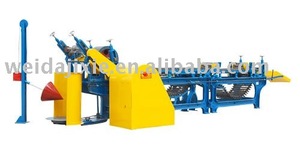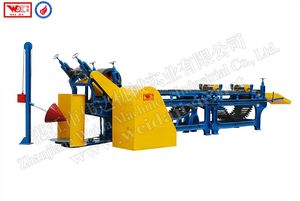
All categories
Featured selections
Trade Assurance
Buyer Central
Help Center
Get the app
Become a supplier

(806 products available)












 Ready to Ship
Ready to Ship
The flax combing machine comes in five main types.
Fibre Extractor
A fibre extractor performs continuous processing of flax fibres. Initially, the machine comes with a beater that opens the bales and feeds the material into the machine. Depending on the type of extractor, it can have separators, combs and beaters working one after the other on the fibre. The beater separates out non-flax items like leaves and wood. The flax is then beaten and combed to remove the remaining impurities. The combed or scoured flax exits the machine as a high-quality fibre ready for the next step in the industrial process.
Carding Machine
The carding machine is similar to the fibre extractor as it separates and cleans the flax. However, here, the flax goes through a series of moving fillets that comb out and clean the material. Some carding machines have two or more rows of moving fillets to improve the quality of the combed flax. At the end of the process, carding machines produce either slivers or felt. The combing and carding machines are essential to improving the product's value before selling it in the marketplace.
Combing Machine
The combing machine is different from the carding machine as it combs a pre-oriented textile material in parallel. This machine raises the value of the flax material and gives it an orderly parallel structure, which is beneficial for spinning later on. Combing machines can have flush combing, which uses flush combs to raise the material's value, or partial combing, where some parts are combed to reduce the percentage of impurities.
Carding and Combing Combination
Some factories opt to use both a carding and a combing machine together sequentially. This combination will raise the priority and final product value significantly. The finished product will have a better texture with a higher percentage of flax fibre and fewer impurities.
Dedicated Carding Combing Machine
This single hybrid machine carries out the carding and combing processes in one step, thus saving time and improving efficiency in product processing. While this innovation will not enhance product value more than the combination of the carding and combing machines, it is an efficient method for going through the flax quickly and producing a useful end product.
The flax fibre combing machine has many specifications that show its ability and features.
For the stable operation of the flax combing machine and improving its service life, performing regular maintenance of the machine is very important and crucial.
Wool textile industry:
Flax combing machines are used in the wool textile industry to comb and straighten wool fibers. The combed wool fibers are easier to spin into yarn, which creates a higher-quality woolen yarn. This woolen yarn in higher grades is often used to make superior products like fine suits, premium carpets, and luxurious blankets.
Hemp textile industry:
In the hemp textile industry, flax combing machines comb and straighten hemp fibers. These fibers are then used to produce hemp yarn, which is renowned for its strength and durability. Flax-combed hemp yarn can be used in various products including eco-friendly fabrics, sturdy rope, and specialty textiles.
Luxury textile market:
High-end luxe and even some no-frills budget brands in the textile market often use flax combing machines to process fibers like cashmere and mohair. The cashmere and mohair fibers are then blended with other materials to create a refined fleece. This kind of fleece is used to spin a cashmere or mohair blend yarn that contains a touch of luxury is often sought after by discerning customers. Products made with this type of yarn include premium cashmere sweaters, elegant scarves, and high-quality pashminas.
Non-woven industries:
In the non-woven industries, flax combing machines are set up to process natural fibers such as cotton, jute, and coir. These fibers are then used to make non-woven fabrics. Flax combed non-woven fabrics find use in a number of applications such as geotextiles, agricultural mats, and eco-friendly packaging materials.
Composite material industries:
In composite material industries, flax combing machines are employed to extract flax fibers. The extracted flax fibers are then incorporated into composite materials. These composite materials have quite a few uses ranging from automotive parts and construction materials to biocomposites used in sustainable products.
Production demand:
Consider the production demand, including the combed flax fiber's quantity and frequency. If there is a high production requirement, selecting a machine with a higher processing capacity could be more suitable.
Machine performance:
Assess the machine's performance, including its efficient processing capacity, fiber extraction rates, and the quality of the final output. An excellent flax combing machine should allow for smooth operation, high extraction rates, and high-quality end products.
Automation:
Higher automation levels can enhance production efficiency and reduce labor requirements. Look at the degree of automation in the combing machine, such as automatic feeding, fiber separation, and the machine's integration with other production lines.
Quality and reliability:
Opt for machines manufactured by reputable brands with proven track records in the industry. Thoroughly research and choose machines with excellent durability and dependability to ensure uninterrupted production.
In conclusion, selecting the right flax combing machine entails a comprehensive evaluation of various elements that impact the production process and final product quality. By carefully examining the combing machine, buyers can significantly improve their production efficiency and the quality of the flax fiber they process.
Q1: Does the flax combing machine help in the separation of fibers from impurities?
A1: Yes, one of the primary functions of the flax combing machine is to separate the desirable flax fibers from various impurities and undesired materials, such as leaves, stems, or dirt.
Q2: Is the manual operation of flax combing machines common today?
A2: No. While some older models may allow for manual operation, modern flax combing machines are designed for automatic or mechanical operation.
Q3: Can the flax combing machine be integrated into a larger processing line?
A3: Yes, the machine can be integrated into a larger processing line, linking the combing operation with subsequent steps like spinning, weaving, or other flax fiber treatments.
Q4: Are there safety features in modern flax combing machines?
A4: Yes, modern machines have various safety features like emergency stop buttons, protective guards, and safety interlocks to ensure safe operation.